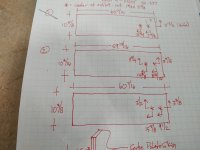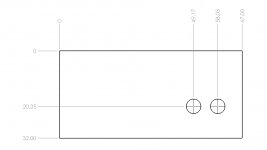Crazyraceguy
Member
- Joined
- Oct 16, 2015
- Messages
- 4,990
Of all things, this was done by a guy with years of experience, at least 10 more than me.
I clearly didn't look at it too well when he first handed it to me this morning, but when I got to it, later in the day, I was shocked. Mostly confused, because I know he looks at our typical drawings every day.
When I went looking for this person to get clarification, he was out somewhere. Another one of the office guys asked if he could help, so I showed it to him. He confirmed what I thought it meant, saying that this guy does this every time. I'm baffled, I understand what it means, but it just looks so wrong.
I clearly didn't look at it too well when he first handed it to me this morning, but when I got to it, later in the day, I was shocked. Mostly confused, because I know he looks at our typical drawings every day.
When I went looking for this person to get clarification, he was out somewhere. Another one of the office guys asked if he could help, so I showed it to him. He confirmed what I thought it meant, saying that this guy does this every time. I'm baffled, I understand what it means, but it just looks so wrong.


